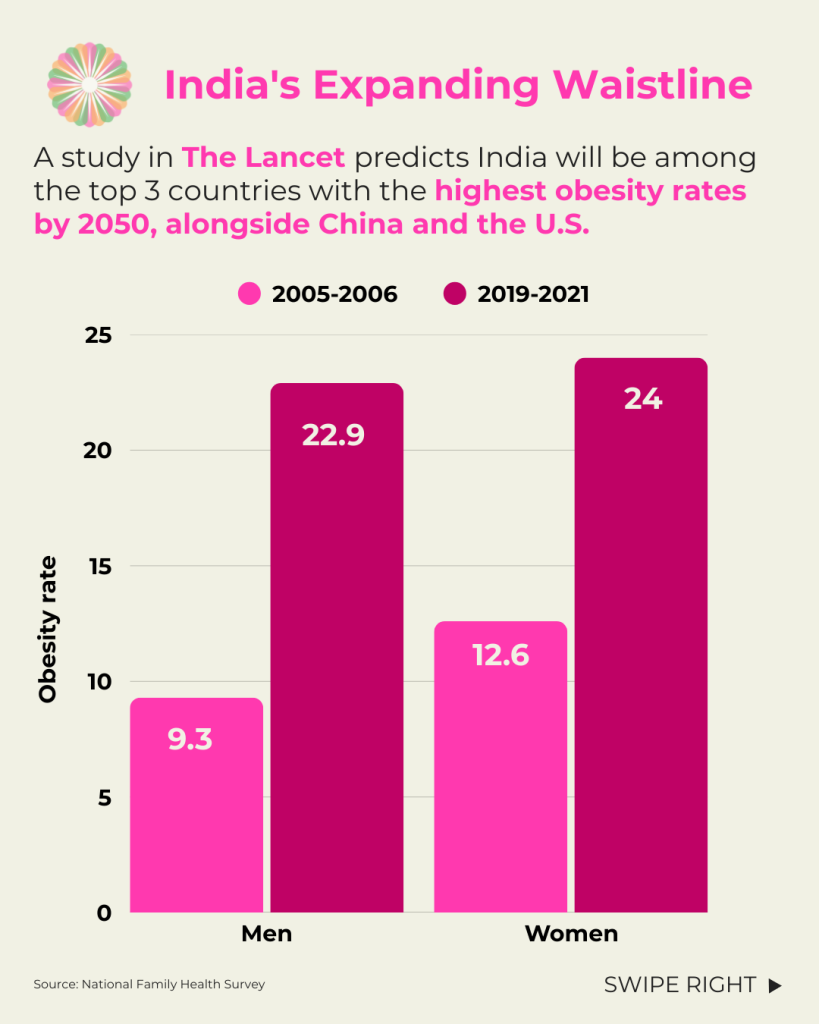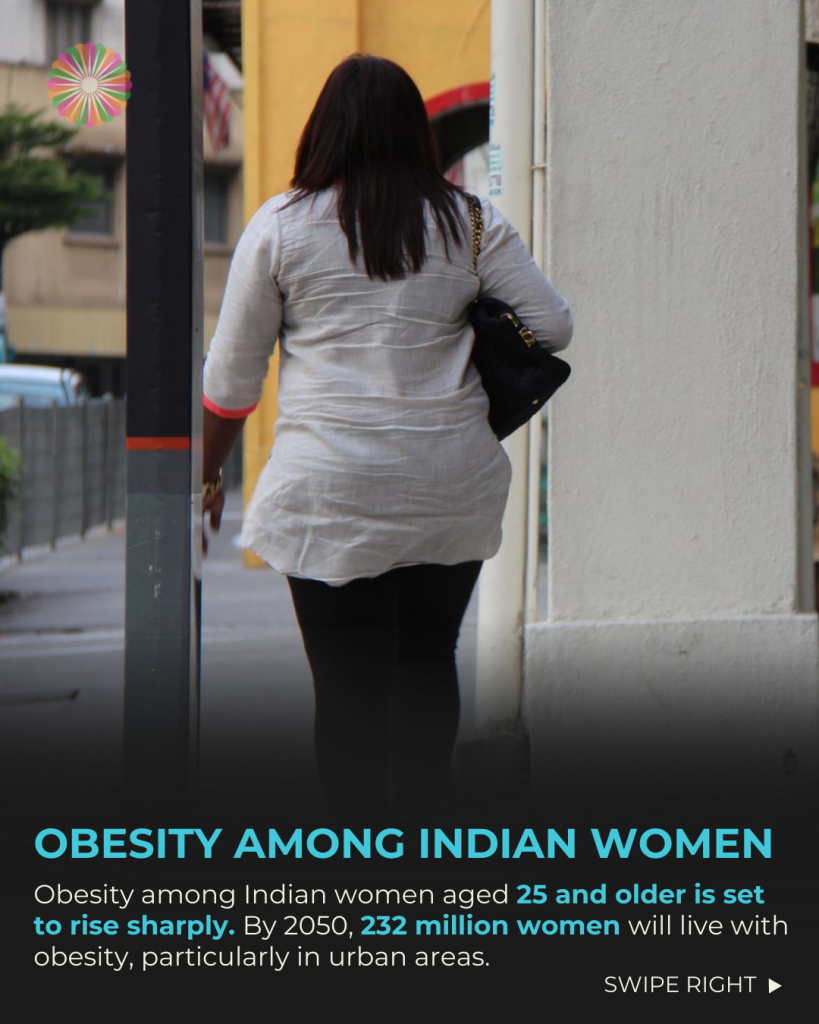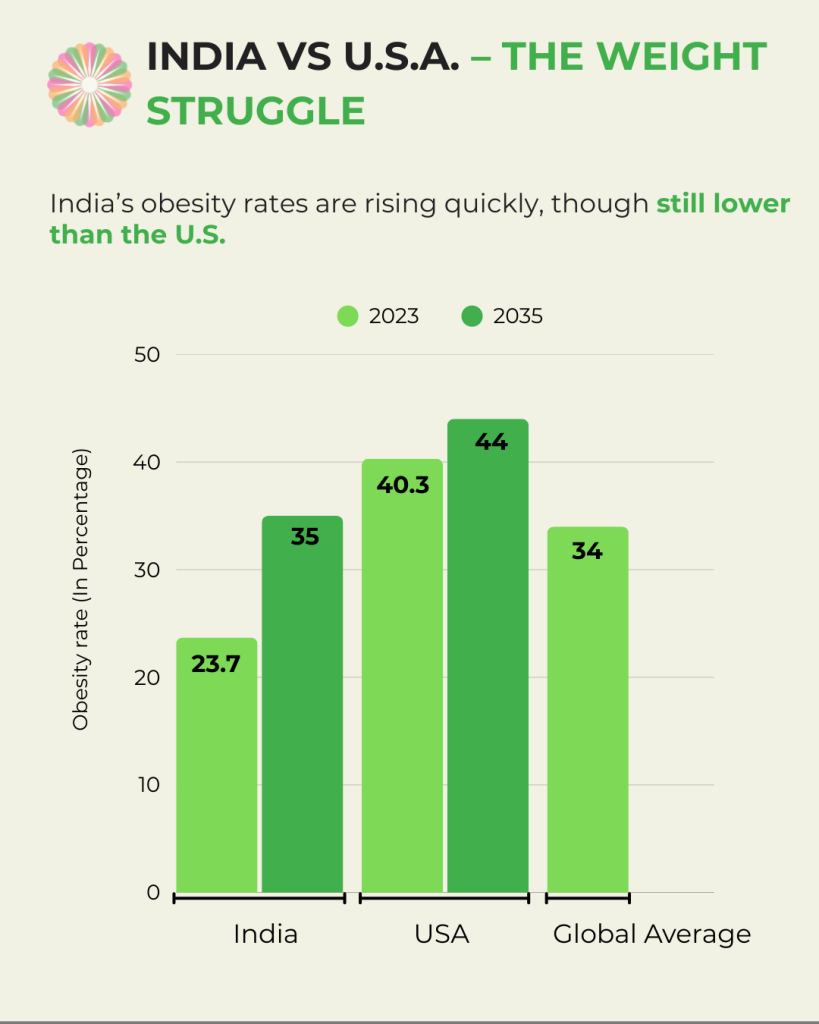

For decades, India has been engaged in a tough battle against malnutrition. But today, a new health emergency is emerging alongside it: obesity.
While undernutrition remains a pressing concern in many parts of the country, especially among children and marginalized communities, urban India is experiencing the opposite problem—soaring obesity rates. This paradox is being driven by the rapid rise of ultra-processed foods, increasingly sedentary lifestyles, and growing stress levels in fast-paced urban environments.
According to a recent study published in The Lancet, India is projected to be among the top three most obese nations by 2050, alongside the United States and China. This marks a dramatic shift in the country’s public health landscape.

The data is particularly alarming for Indian women, especially those living in cities. Obesity among women aged 25 and older is set to rise sharply over the next few decades. By 2050, an estimated 232 million Indian women will be living with obesity—a staggering figure with long-term implications for family and societal health.

The crisis doesn’t stop with adults. Childhood obesity in India has more than doubled in recent decades. Children and adolescents today are increasingly exposed to processed snacks, screen-heavy routines, and a lack of physical activity—all contributing to early-onset lifestyle diseases such as type 2 diabetes, hypertension, and heart disease.

While India’s current obesity rate is lower than that of the United States, it is rising at an alarming pace. In 2023, 23.7% of Indians were classified as overweight or obese, compared to 40.3% of Americans. Projections for 2035 suggest India’s rate could climb to 35%, approaching the U.S.’s projected 44%, and aligning closely with the global average of 34%. In the U.S., obesity is already a major public health crisis, with 9.7% of adults considered severely obese and an estimated $173 billion in annual healthcare costs—particularly concentrated in Southern states. India is not far behind, and without urgent intervention, it may soon face similar economic and health burdens.

This isn’t just a matter of weight. Obesity is closely linked to a range of chronic illnesses, reduced life expectancy, and a diminished quality of life. It affects productivity, healthcare costs, and the overall well-being of families and communities.
India’s public health response must evolve to meet this dual burden—continuing efforts to eliminate malnutrition while proactively addressing the rise of obesity. This means rethinking our food systems, improving urban infrastructure for physical activity, and launching large-scale awareness campaigns focused on preventive health.
As the country strives for development, ensuring the health of its population must remain a top priority. Combating obesity isn’t just about slimming waistlines—it’s about safeguarding futures.
Are You Passionate About India's Future? Join Our Community to Collaborate, Advocate, and Create Positive Change.